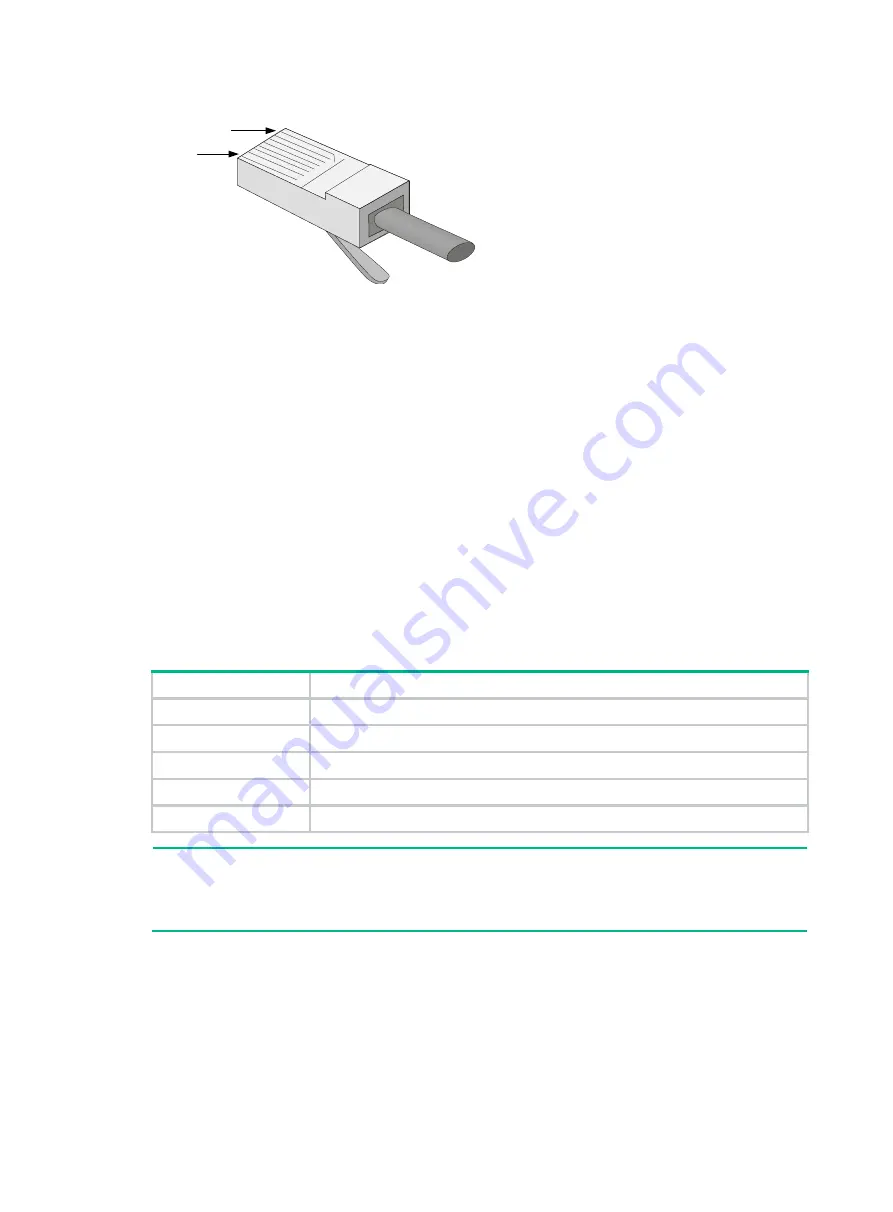
71
Figure 44 RJ-45 connector pinout diagram
Cable pinouts
EIA/TIA cabling specifications define two standards: 568A and 568B for cable pinouts.
•
Standard
568A
—pin 1: white/green stripe, pin 2: green solid, pin 3: white/orange stripe, pin 4:
blue solid, pin 5: white/blue stripe, pin 6: orange solid, pin 7: white/brown stripe, pin 8: brown
solid.
•
Standard
568B
—pin 1: white/orange stripe, pin 2: orange solid, pin 3: white/green stripe, pin 4:
blue solid, pin 5: white/blue stripe, pin 6: green solid, pin 7: white/brown stripe, pin 8: brown
solid.
Cable type
Based on performance
Ethernet cables can be classified into category 3, category 4, category 5, category 5e, category 6,
category 6A, and category 7 cable based on performance.
Table 54 Ethernet cable description
Type Description
Category 5
Transmits data at a maximum speed of 100 Mbps, with a bandwidth of 100 MHz.
Category 5e
Transmits data at a maximum speed of 1000 Mbps, with a bandwidth of 100 MHz.
Category 6
Transmits data at a speed higher than 1 Gbps, with a bandwidth of 250 MHz.
Category 6A
Transmits data at a speed higher than 10 Gbps, with a bandwidth of 500 MHz.
Category 7
Transmits data at a speed higher than 10 Gbps, with a bandwidth of 600 MHz.
NOTE:
The 10 Gbps RJ-45 Ethernet ports use category 6A or category 7 Ethernet twisted pair cables for
connection. Other RJ-45 Ethernet ports use category 5 or higher Ethernet twisted pair cables for
connection.
Based on pinouts
Ethernet twisted pair cables can be classified into straight through and crossover cables based on
their pinouts.
•
Straight-through
—The pinouts at both ends comply with standard 568B, as shown in
.
•
Crossover
—The pinouts at one end comply with standard 568B, and those at the other end
comply with standard 568A, as shown in
PIN #8
PIN #1






























